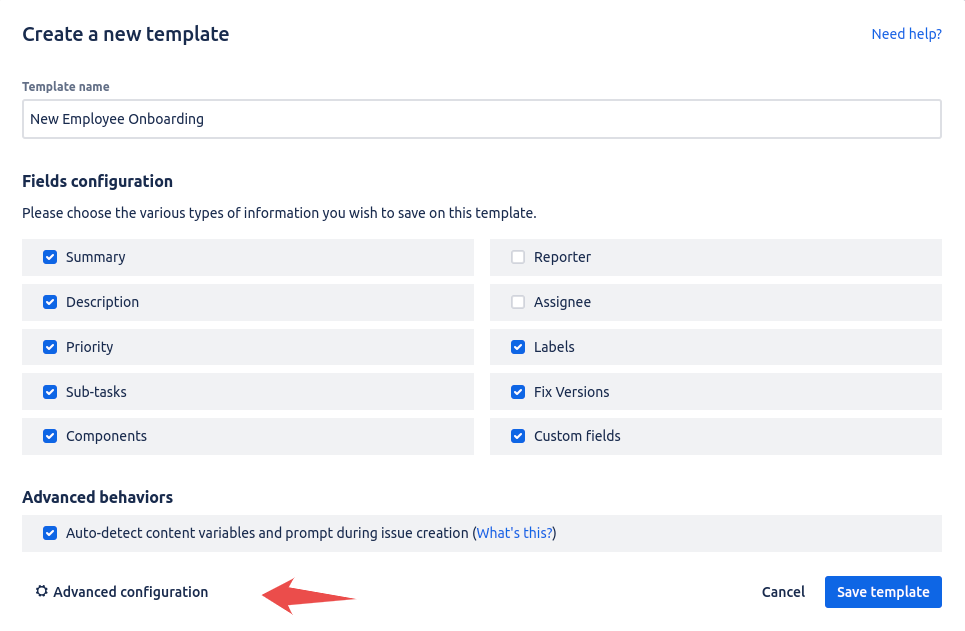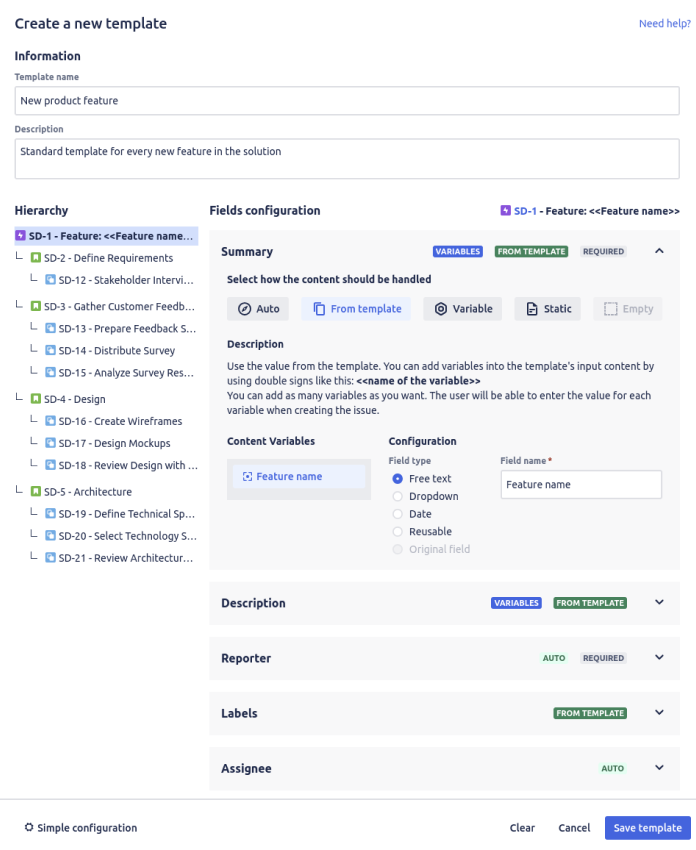Advanced Templates
Unlock the full potential of your Jira workflow with advanced templates
Creating advanced templates
This page will help you harness the full power of our template features, allowing for more complex configurations to meet your specific project needs.
Step-by-step guide to creating advanced templates
Follow the same steps as if you were creating a simple template:
- Begin by either creating a new issue or navigating to an existing issue you'd like to turn into a template.
- On the right side of the screen, click on the three-dots icon. From the drop-down menu, select Save as new template.

- Select Advanced configuration at the bottom-left of the screen.

- Once the advanced template configuration screen loads, you'll notice different sections corresponding to various Jira fields, such as Summary, Description, Reporter, etc. Each field's behavior can be configured individually.
For instance, one field might draw its value from the template, while another prompts the user during issue creation.

1. The name of your template.
This name will be displayed in the issue creation screen.
2. The configuration of the Summary field.
Before you delve into the specifics of the template's contents, it's essential to determine the type of field you're working with. This helps ensure consistency and proper behavior during the issue creation process.
- Auto
By default, this setting allows Jira to manage the field. Our extension won't input any value into it unless it's marked as required. If it's a mandatory field, users will be prompted during the issue creation process. - From Template
The field will automatically draw its content from the associated template value. This applies to all types of content, be it text, date, URL, checkbox, etc. If your template contains variables, their configuration will appear here.
- Variable
This setting transforms the template field content based on user input. You can set the input format as Text, Date, Dropdown, Original Issue, or Reusable. Important to note: when a field is set as a variable, it becomes a mandatory field during issue creation.
- Static
Setting a field as static means you select once and for all its content and won't prompt the user for input during issue creation.
- Empty
Different from "Auto", this setting ensures the field remains blank. This is only possible if the Jira field isn't mandatory.
3. All the other fields available on the issue.
Click to expand its configuration
Children issues and hierarchy
You might want to create a template that contains several child issues, such as an Epic template containing user stories and tasks.
When you create a template from such parent issues, the template creation screen will automatically display all the contained issues and offer the same level of configurable details.

We provide an easy-to-use Atlassian Jira extension that simplifies template creation and daily use.



